By Jonathan Crain
Business Improvement Districts (BIDs) are a great tool for implementing impactful revitalization in urban areas. They’re sort of like a homeowner’s association for a commercial district.
A BID gives neighborhood stakeholders a way to fund and enact their vision for a specific area. In Birmingham, we have one BID that has done a ton of great stuff for our City Center. Read more below:
One of the great things about a BID is how flexible it can be. The most important legal function of a BID is to “undertake such other activities or initiatives within the district as the Board of Directors of the District Management Corporation deems appropriate It all comes together to make a vibrant urban place.”
That’s a fancy way of saying that a BID can reflect whatever priorities are important to the stakeholders in that district. While one district might want to focus on a clean and safe initiative to keep their doorstep spotless and inviting, another might want to focus on branding and giving their area a real sense of place.
A BID can also be a catalyst for improving the built environment in ways that far exceed its actual budget by doing things like commissioning traffic studies or piloting small versions of much larger projects. For example, this Milwaukee BID is creating a temporary parklet to advocate for more green space in their district.
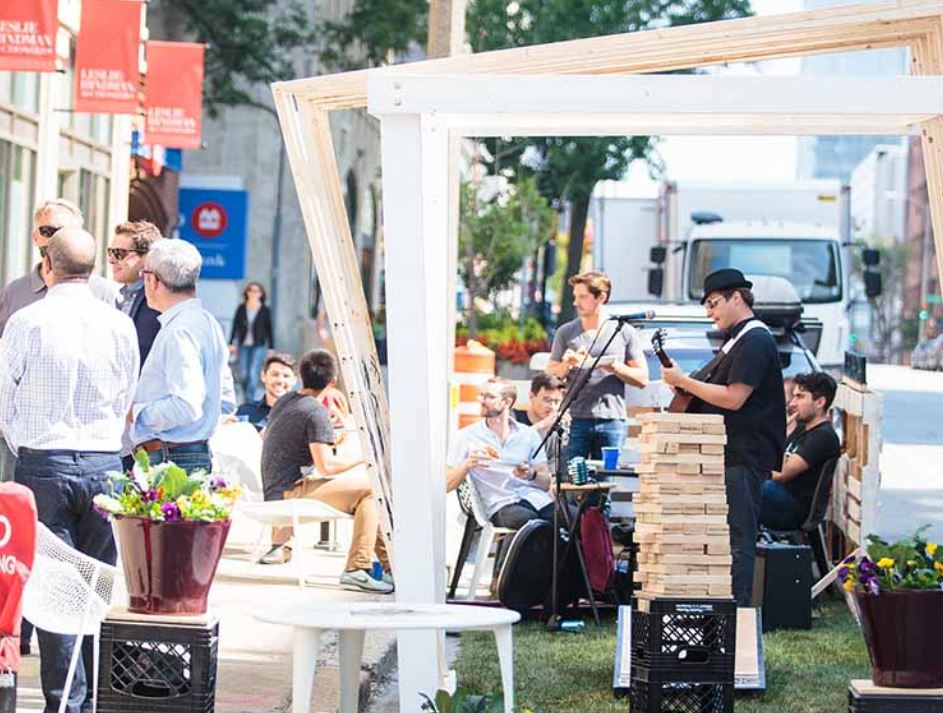
The Bluebird District in Colorado is doing the leg work on community engagement to plant the seeds for a new BUS Rapid Transit system.
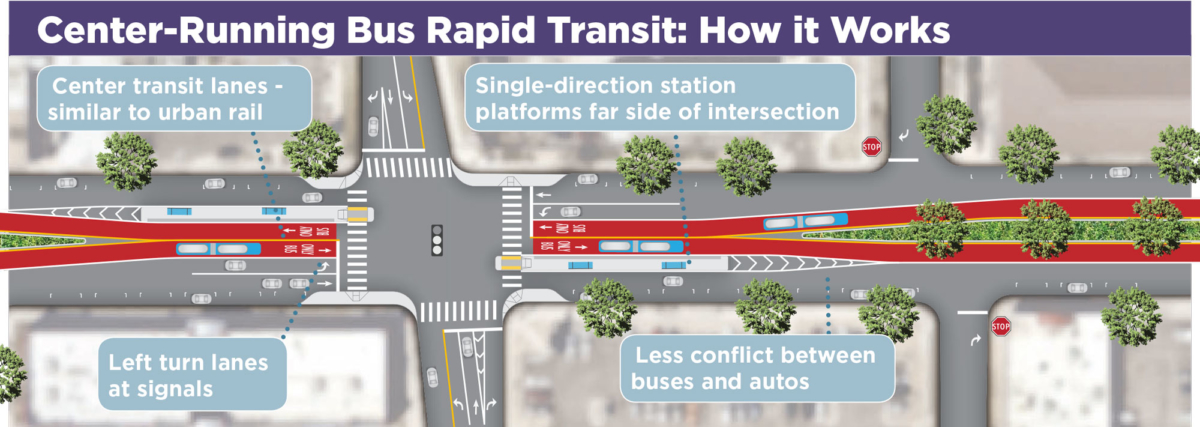
Having an entity that knows the needs and wants of a particular district and can advocate for those needs is a powerful tool for improving the urban landscape.
Where am I?! A BID can answer the most basic question with some signage! A signage initiative could come in the form of wayfinding signs that show a visitor to the district where they are and what’s close by. It can also tell visitors where they are in a more abstract sense by providing a sense of place with some neighborhood banners, or even standardizing existing signage.
The Golden Triangle BID in Washington DC uses banners on light poles to herald the neighborhood identity.
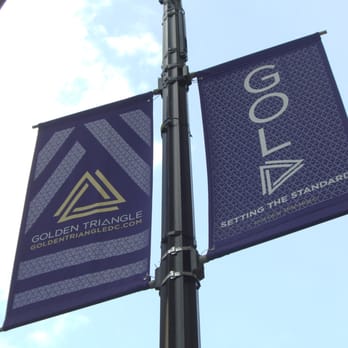
They also hold a local haiku competition in which winners’ poems are made into inspiring signs that adorn the neighborhood’s flower beds.
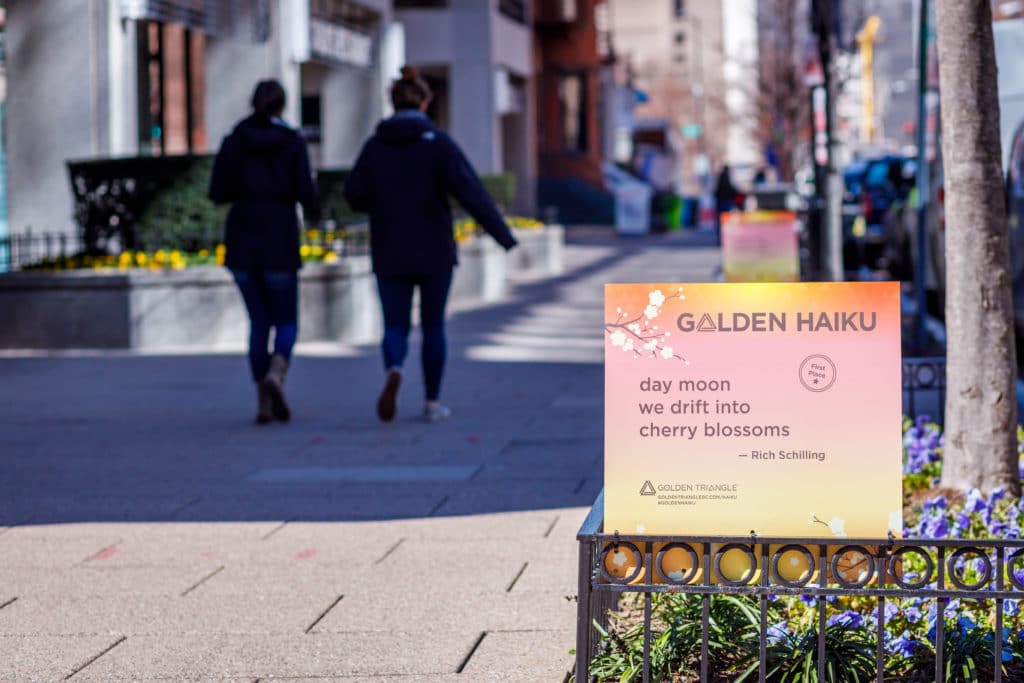
A lot of urban neighborhoods all over the country already have a great character and sense of place, but the missing piece is people. A BID can create vibrancy by hosting and promoting events that bring people in to experience what the district has to offer.
The North Park Main Street BID in San Diego focuses on events that keep the neighborhood active and thriving including multiple annual music events, food festivals and a weekly farmers market.
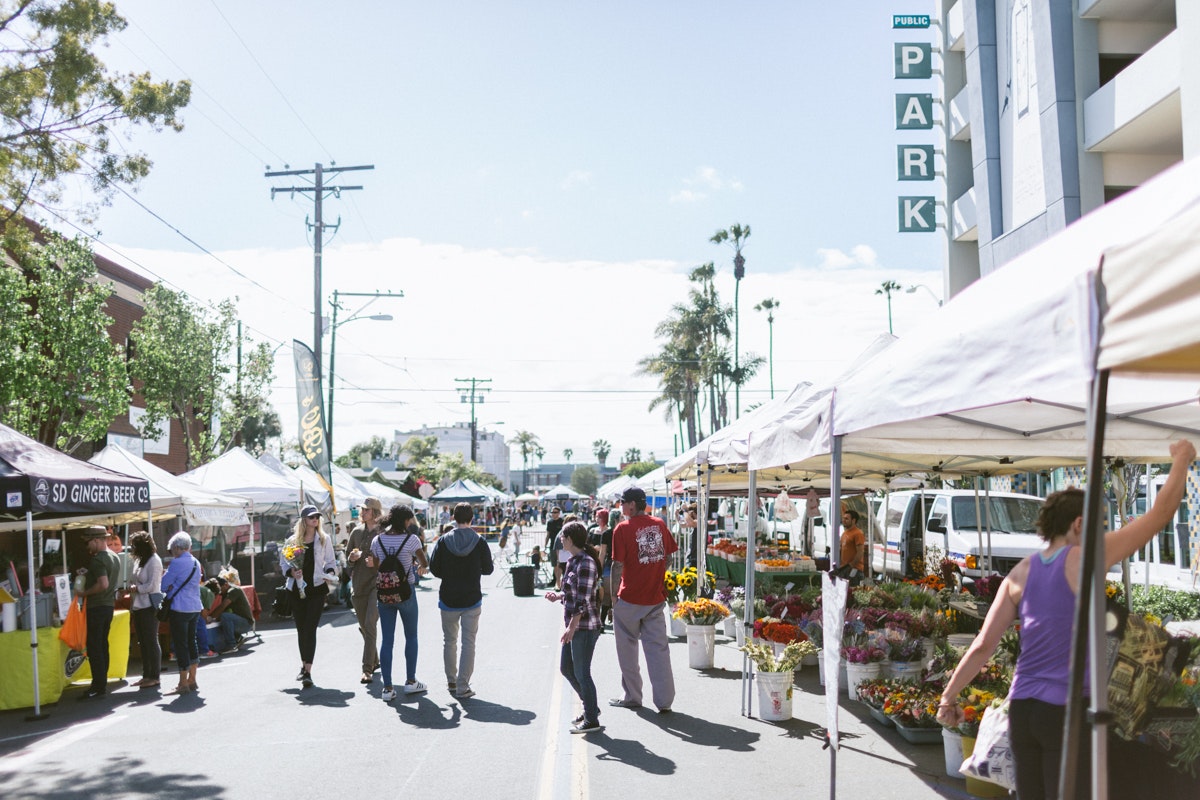
This focus on event promotion ensures that people always have a reason to visit and enjoy the district. Once a commercial business district has a clean, cohesive, inviting and active environment it needs to get the word out!
A BID can promote all of its programs, as well as everything the neighborhood has to offer by creating and maintaining a web presence. Most people look for events, activities, restaurants, directions…. almost everything actually… online.
So, a good website and social media presence can be the linchpin for a district’s financial success.
The Arts District of LA BID does a great job of highlighting events and activities in their area. Their website includes interactive maps of all the parks, murals, bars, restaurants, and art galleries in the district so that visitors can easily find a reason to visit their district.
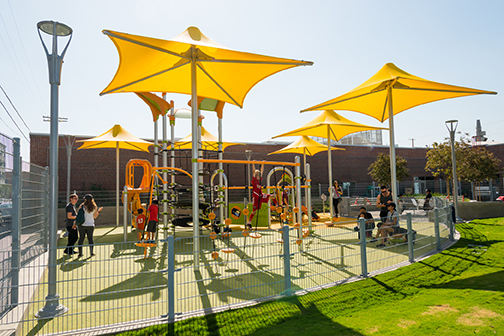
These are just a few examples of what a BID can do for a district. We’re looking forward to a future where more BIDs are created in Birmingham that can give our districts stronger identities.
Related News
-
Why we say yay to two-way streets
Filed Under: Developer, Downtown Birmingham, Filling Vacant Spaces, Front Page, Transportation, Yaysayers
REV Birmingham is a long-time advocate for making the switch to two-way streets downtown, and this is something recommended by planners studying our downtown for years. In fact, the team that developed the 2004 City Center Master Plan recommended many street changes but noted 4th Avenue North conversion should take place “immediately.” We believe this project is a catalytic moment for Birmingham – but you may find yourself wondering why that is.
-
The Key Tool for Urban Revitalization: Downtown BHM's Business Improvement District
Filed Under: Business-Proving, Developer, Downtown Birmingham, Front Page, Get Involved, Potential-Proving, Why BHM
By the time REV took on BID management in 2018, downtown had a new set of needs from its BID. Downtown Birmingham in the ‘90s had a population mainly of 9 to 5 employees. But the downtown of 2018 had a whole new population of residents and visitors throughout the day and night. We had new opportunities to create positive experiences, inviting them into more downtown businesses and public spaces, and to keep them coming back for more.
-
Introducing the six businesses that call Nextec home
Filed Under: Business-Proving, Developer, Downtown Birmingham, Filling Vacant Spaces, Front Page, Historic Preservation, Potential-Proving, Why BHM
On the corner of 3rd Avenue and 16th Street North, you’ll find Nextec, a redevelopment of the 90-year-old, 65,000-square-foot Edwards Motor Company building (also formerly known as the Sticks ‘N’ Stuff building). With experience in historic renovation, developer Michael Mouron, chairman of Capstone Real Estate Investments, began this civic project in 2021 as a space for business startups to continue their work in the Magic City – a function encouraged by REV Birmingham.